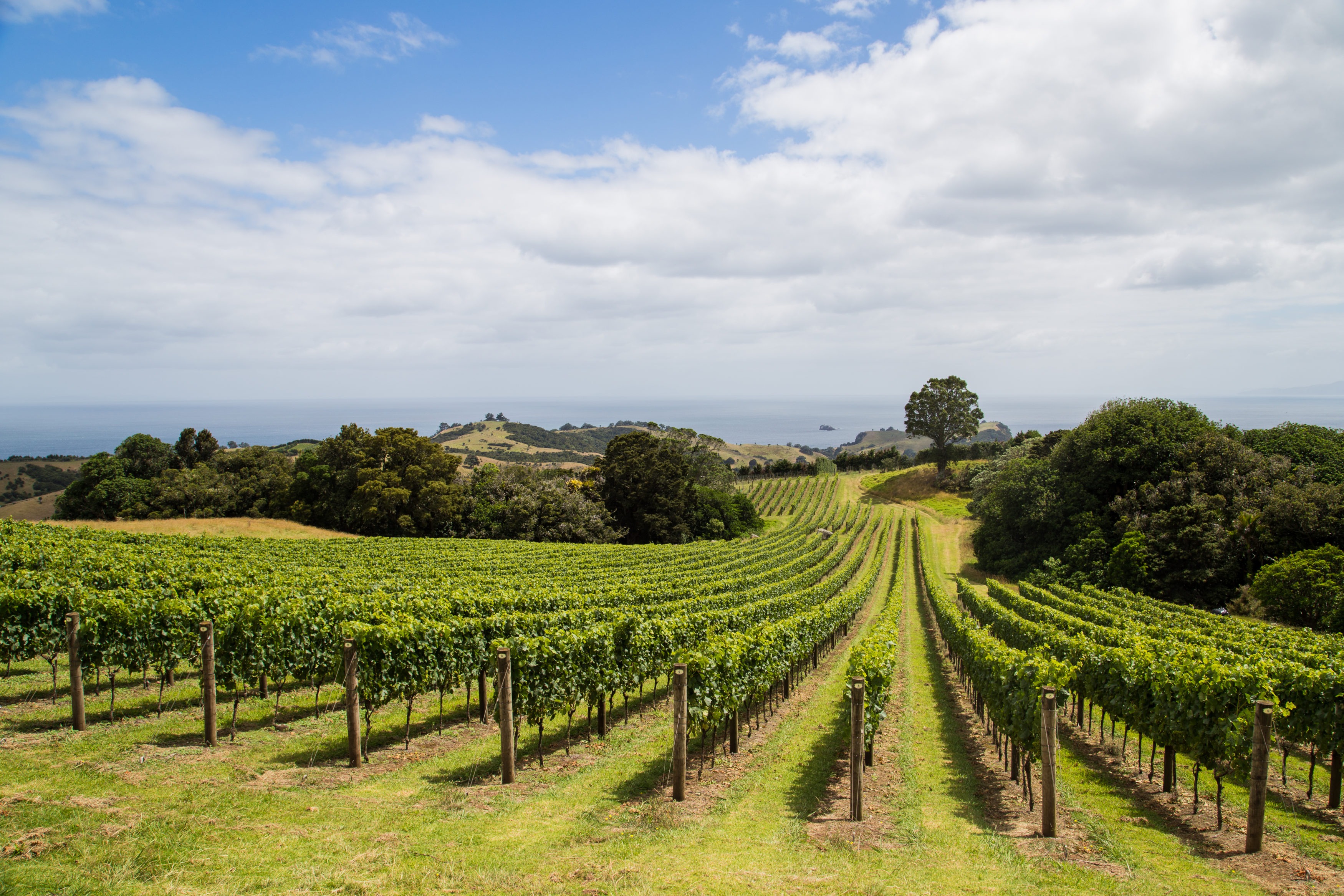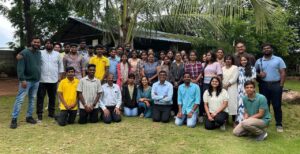Editor’s Note: Peter Wren-Hilton is founder at Wharf42. Wharf42 was established in 2012 to support early-stage Kiwi tech companies connect with Silicon Valley’s vast innovation ecosystem. Here he demonstrates how New Zealand’s agtech startups are thinking globally to develop their technologies.
Inside a converted shed in Te Puna, New Zealand, Alistair Scarfe plays a video of a hybrid-electric, self-driving rover rolling under a kiwifruit canopy, pollinating flowers. Scarfe is a 32-year-old with a PhD in industrial automation, and he’s the co-founder of Robotics Plus, a New Zealand-based company building agricultural robots for its home market and for farmers in the US. His company built the rover in the video. He points out the vehicle’s low stature and explains it’s built that way to accommodate kiwifruit canopies, but it can be reconfigured to accommodate other crop varieties.
“If it was a ground crop, we could make a high, overarching machine that has robots that hang underneath it,” Scarfe says.
Scarfe grew up on a farm in the Wairarapa, in the southeastern corner of New Zealand’s North Island. He didn’t build robots in his youth, but he says he was always “mucking around” with trucks, tractors, and tools—making things like effluent scrapers from old parts lying around. In 2013, he and his current team partnered with Auckland and Waikato universities to build robotic systems to harvest the more than three billion kiwifruit grown in New Zealand each year. Robotics Plus has since secured NZ$12 million (US$8.5m) from government agencies to develop its technologies. Its latest development is a packing machine for the apple industry.
Robotics Plus is one of a handful of tech startups developing solutions to improve the systems and processes driving New Zealand’s projected $30 billion agricultural export sector in 2018, up 8.5% from 2017. Like Scarfe’s company, most of New Zealand’s agtech ventures also have an eye towards international markets, which are almost universally facing the same challenges: feeding growing populations amid increasingly unpredictable weather conditions and with fewer workers.
“It’s becoming harder every year,” says Keith Olsen of Olsen Brothers Ranches, a family farm in Washington state. Olsen Brothers Ranches grows apples, wine grapes, blueberries, cherries, and hops, and has started using self-driving vehicles for harvesting apples. During peak harvest, the farm employs up to 700 field workers, nearly all from Mexico. Rising minimum wages, decreasing net migration from Mexico to the U.S., and uncertain immigration policy are making it harder for farms to meet their labor needs.
Helping hands
“The biggest desire for robotics comes from the fact we can’t find enough workers,” Olsen says.
Olsen Brothers Ranches isn’t unique in its struggle to keep its farm staffed and running. Washington State University associate professor Manoj Karkee, who leads a research program in agricultural automation, says labor shortages are at crisis levels globally, as people move from rural to urban areas, choosing knowledge work over farm work. He adds that human farm labor is also physically taxing and dangerous, particularly in high heat.
“We need to adopt these robotic solutions,” Karkee says. “The agriculture industry will be less and less sustainable in the long-term if we don’t.” The trick is commercializing machines at a price point that works for farmers.
That is precisely what Robotics Plus is working towards with its robotic systems. Its Robotic Apple Packing Cell, for example, has already sorted 8.5 million apples in commercial trials in New Zealand. It is now being tested at a large pack house in Washington state as an entry point into the US apple market, which is 12-times the size of New Zealand’s. At least four US multinational companies have expressed an interest in the system.
Scarfe explains that Robotics Plus’s apple packer can pack 120 apples per minute—the same amount as two human workers. A sensor on the device recognizes different sizes, shapes, colors, blemishes and varieties, and a suction cup sucks up the apples and gently drops them into trays, ready for transport. Trials revealed that the packer’s apples were well-selected and didn’t degrade in transit, Scarfe says. “It looks like it handles fruit more consistently and gently than what people tend to do.”
Locally grown
Changing global demographics are not only changing the way food is harvested, they’re changing the way food is grown. There will be nine to 10 billion people on the planet by 2050, 70% of whom will live in cities, according to a report from the Food Agriculture Organization. “In order to feed this larger, more urban and richer population, food production must increase by 70%,” the report states.
Demand for locally-grown and urban food is already playing a part in an evolving global food system. Whole Foods and other US grocery retailers have started offering in-store greenhouses in recent years. Examples include Whole Foods’ 20,000 square foot rooftop greenhouse in Brooklyn, NY, which grows around 250,000 pounds of pesticide-free leafy greens, herbs and tomatoes each year. Hydroponics and aquaponics, which combines fish farming with hydroponic operations, are also becoming popular among urban growers.
Indoor farming offers advantages to traditional farming beyond just being geographically flexible. Potential benefits include the reduction or elimination of pesticides, better yields, higher profits, and water savings, says Gene Giacomelli, director of the University of Arizona’s Controlled Environment Agriculture Center.
Supporting what Giacomelli calls “the future of our food infrastructure” is what Tauranga-based Bluelab was set up to do. Bluelab makes temperature and pH metering and control equipment for indoor agriculture facilities. The 30-plus-year-old company started out focused on the New Zealand market but now, with 75% of its sales already going to the U.S. and 20% growth every year, the company is now homing in on “hyper-local growing,” says CEO Greg Jarvis.
“What I think we’re going to see is smaller facilities closer to the actual market they want to distribute it to, rather than trucking it from the West Coast to the East Coast,” he explains.
Serving these facilities will require Bluelab to develop products that are simple and easy to use. That’s something Jamie Yeast says Bluelab already does well, however. Yeast, who manages hydroponics at Denver-based indoor farm Growhaus, says he can teach someone to use Bluelab’s pH pens and electrical conductivity meters in 20 minutes.
“We take readings two or three times a day and add nutrients based [on] what we’re seeing,” he explains.
Yeast mentions that monitoring is essential in hydroponics production. For Growhouse, which is a non-profit, maintaining the right the nutrient levels and pH balance of the water its leafy greens grow in can mean the difference between a $4,000-per-week harvest or $400-per-week.
Bluelab is also expanding its product line to better serve other types of farming operations. In November, it launched a tool to measure pH-levels in soil. Bluelab developed the product based on research with the Center for Applied Horticultural Research in Vista, Calif., which revealed that maintaining plants’ optimum pH soil levels throughout the growing cycle increased yields.
“It means as a grower if you [expect] three pounds of tomatoes, you end up with that—you don’t end up with 1.5 or one,” Jarvis says. He adds that in addition to helping growers anticipate crop yields, pH-controlled plants are also more resistant to pests and disease.
Precision Products
Pest and disease resistance isn’t an issue indoor growing operations have to contend with as much as outdoor farms, where most of the world’s food is still grown. Problems such as over spraying are what Mosgiel-based precision agriculture company TracMap is trying to solve.
TracMap offers a subscription service to a cloud-based software system that connects to vehicles via GPS. The software allows farmers to draw maps using Google Earth, identify hazards, and schedule spraying and harvesting jobs. Colin Brown, the company’s founder, says the cost savings to a typical grower using TracMap is about four to five times the annual subscription cost. “The big benefit [is] improvement in yield and productivity through not having mistakes in the spraying system,” he adds.
Danny Smith, the former vineyard manager for Gallo Winery, worked with TracMap on a pilot project for two years and says using its system to track fungicide applications was a big improvement over his crew’s old approach: marking rows of sprayed grapes with stick and stones.
“We marked a row and never knew exactly where we were,” Smith explains. Gallo’s rows often got sprayed more than once. He continues: “[With TracMap] we were able to track where we sprayed and how much we sprayed.”
Brown adds that more accurate applications of fertilizer or pesticides and fungicides also improves food safety.
For now, U.S. growers represent only five percent of TracMap’s market. But Brown is eyeing a bigger share of California’s $5 billion grape market and the broader US agriculture sector.
Made in New Zealand
What TracMap, Bluelab and Robotics Plus all have in common is that they’re part of an agtech ecosystem that is starting to gain recognition for its innovation well beyond the boundaries of New Zealand.
Bluelab’s Jarvis says that being part of both a company and a country that is small and nimble pays off for his customers and the people who consume his customers’ crops.
Robotics Plus’ Scarfe agrees. “It pleasantly surprises people–the level of transformational technology that’s being built in a shed in the back of Te Puna. I think there are a lot of New Zealand companies that could have a pretty big impact.”




